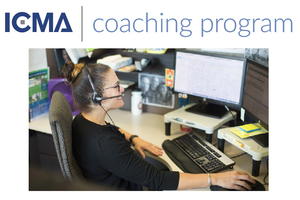

I’m a recreation manager who oversees the Recreation Division in the city’s Community Services Department. My team includes 15 full-time staff and numerous part-time employees and volunteers. We deliver a wide range of youth sports, arts, and other leisure activities.
Our community is affluent, with many families having very high expectations for their kids. A lot of middle school and high school students are experiencing lots of stress as they strive to take AP classes, achieve exemplary grades, get involved in sports and extracurricular activities, and out-perform their peers.
Our community is now witnessing a series of youth suicides, as well as significant substance abuse problems. A school district survey, as well as the youth suicide numbers, indicates that many teens are seriously at risk of harm.
The school district has begun to fund more counseling services at the four middle schools and the two high schools. The city council would also like to respond as part of its “Safe Community” priority.
With the active support of the community services director, I want to develop an initiative that would help our recreation staff and volunteers better connect with youth in our various programs, develop supportive adult relationships with the students, and provide them with resources. I would especially like to develop a peer support network for teens.
I’m all in. However, when I’ve spoken to staff about creating a responsive initiative, they seem reluctant to commit. I can’t seem to motivate them to address the challenge. For example, I asked our Recreation Division team to begin identifying current community resources from public and nonprofit organizations and any gaps in services. However, there’s been poor follow-up.
I believe that suicide and substance abuse problem is a crisis for our community. How do I secure a commitment from staff?
Key Premises
To help get staff energized about the challenge, you must first recognize certain realities:
- You, as a leader, cannot motivate anyone. You can only support one’s self-motivation.
- Seeking buy-in does not work. Even if you have a great idea (such as crafting a peer support program for distressed teens), people will resist it because you are pushing the concept and trying to “sell” it. The more you push, the more people resist.
- People decide to commit or not. It’s a choice they make. You cannot force commitment.
Approaches for Engaging Staff and Activating Commitment
I would suggest several approaches to engage and energize staff so they may decide to commit.
1. Provide stories
You do have some data (for example, the school district’s student survey, as well as the suicide numbers). Data is necessary but completely insufficient.
Data and “facts” do not drive commitment or other behavior. Stories drive behavior. Therefore, you can help bring together teens and parents with staff so they can share their stories of crisis and survival. Better yet, ask the staff or volunteers to seek out teens who can share their stories at a staff meeting or retreat.
Stories are the most powerful way to communicate the challenge and possible solutions. (See Career Compass #50 “Story-Telling—A Powerful Way to Lead and Communicate.”)
2. Focus on the big “why.”
Instead of emphasizing “what” your team can do or “how” your team will respond, first focus on the big “why” that might resonate with the staff, such as “saving kids’ lives.” Only a big “why” can inspire action. (See Simon Sinek, Start with Why: How Great Leaders Inspire Everyone to Take Action.)
3. Figure out the values and aspirations of staff and then ensure alignment
Recognizing that employees choose to commit or not, leaders must get to know their team members and their values, aspirations, and goals. Then you can align the challenge with their ambitions and goals. For example, if there are team members who are eager to move up in the organization, you could identify as part of the initiative new areas of learning and leadership and career development opportunities that resonate with those who want to advance.
4. Anticipate the WIIFM questions
When a leader asks employees to commit, Rockwell (Leader Freak blog, June 30, 2014) suggests that people naturally ask themselves a series of questions:
- Does it matter to me?
- Do I want to?
- Can I make a meaningful contribution?
- Am I happy with what I’m currently doing?
- Do I (or will I) have the time and resources?
- How long is the commitment?
- What will I learn?
- Will I enjoy it?
You need to be prepared to respond to these kinds of WIIFM (“What’s in it for Me”) questions.
5. Ask questions
Don’t push your program ideas. People will push back or pull back. Rather, ask questions:
- Why would we get engaged in this challenge?
- What unique value could we provide if we got involved?
- How might we respond?
- What’s another approach?
- What are your concerns about getting involved?
- How might we address your concerns?
- What would we learn?
- What resources would we need to respond?
- What is one step we could take to explore this challenge or respond to it?
- What would “success” look like for us?
(See Career Compass #73 “How Do We Generate Creative Ideas?”)
These kinds of questions can help engage staff, volunteers, and other stakeholders in authentic conversations. Of course, you must be open to the discussion and be willing to be changed by the conversation. (See Career Compass #61 “Leadership is the Art of Conversation.”)
6. Don’t minimize concerns
Frequently, when leaders seek buy-in to their ideas, they minimize the concerns of others. They see concerns as simple resistance to their ideas.
Even though the leader may not think the concern is a big problem, it may be perceived as such. Therefore, do not minimize constructive dissent (Dan Rockwell, Leadership Freak blog, March 26, 2019) or provide quick answers to perceived problems.
7. Find other champs
As you have one-on-one conversations and team discussions, you may find one or several staff members or program volunteers who are energized by this opportunity to make a difference. Share the leadership role with them. Encourage them to facilitate specific conversations. Let them demonstrate commitment, even in small ways.
8. Explore a small commitment
When you sense reluctance, ask for a small commitment. Slowly “my commitment” becomes “our commitment.”
In your case, a small commitment by the team would be to conduct 10 conversations with students at the middle schools and high schools and report back to the team.
9. Provide a safety net
If you focus on a small commitment or two and learning as you go, it makes it safe for team members to try out some new or different efforts. As your team proceeds, it’s critical that you don’t punish mistakes or failures, but rather treat them as learning opportunities. (See Career Compass #69 “Psychological Safety—The One Key Determinant of Team Effectiveness.”)
To promote learning, don’t forget to debrief experiences as they happen:
- What is going well?
- What is not going so well?
- What are we learning for our future practice?
10. Ensure proper “hand-off.”
Once your team decides to take a step or two, you must ensure a good follow-up. Good follow-up builds commitment. Poor follow-up undercuts commitment.
There are a variety of reasons that people fail to follow up on assignments. People tend to have poor follow-up when:
- The assignment is imposed on them.
- The leader tells them how to do it (there is little or no autonomy).
- People are overwhelmed or stressed to the max.
- Directions or expectations are unclear.
- Concerns are not minimally addressed.
- Resources (especially time) are not provided.
Dan Rockwell (Leadership Freak blog, April 8, 2019) adapted some suggestions from Peter Bergman to minimize poor hand-offs and thereby enhance follow-up:
- Where is this project on your list of priorities?
- What’s the next step?
- What’s the timeline for taking the next step?
- What do you need to bring up before we end our meeting? Any concerns? Possible issues?
- Who needs to know about our plan? Who is going to tell them? How?
- When is our follow-up meeting?
- How can I help?
Conduct proper follow-up. Decide with your team what you can do as a leader to support the team and then demonstrate that you did in fact, do what you committed to doing.
11. Celebrate progress
Assuming that the initiative is aligned with people’s aspirations and goals, they will tend to stay motivated if they see progress. (See Teresa Amabile and Steven Kramer, The Progress Principle.) Therefore, as the team completes a step or two forward, acknowledge progress and celebrate it. Bring coffee and bagels to the meeting, recognize progress, and explore next steps.
An Invitation To Commit
It is clear that you cannot command commitment. Make sure to align the opportunity with the aspirations of others, invite a small commitment, build on it, and create progress and momentum.
 Sponsored by the ICMA Coaching Program, Career Compass is a monthly column focused on leadership and career development issues for local government professional staff. Dr. Frank Benest is ICMA’s liaison for Next Generation Initiatives and resides in Palo Alto, California. If you have a leadership or career question you would like addressed in a future Career Compass, e-mail careers@icma.org or contact Frank directly at frank@frankbenest.com
Sponsored by the ICMA Coaching Program, Career Compass is a monthly column focused on leadership and career development issues for local government professional staff. Dr. Frank Benest is ICMA’s liaison for Next Generation Initiatives and resides in Palo Alto, California. If you have a leadership or career question you would like addressed in a future Career Compass, e-mail careers@icma.org or contact Frank directly at frank@frankbenest.com
New, Reduced Membership Dues
A new, reduced dues rate is available for CAOs/ACAOs, along with additional discounts for those in smaller communities, has been implemented. Learn more and be sure to join or renew today!
